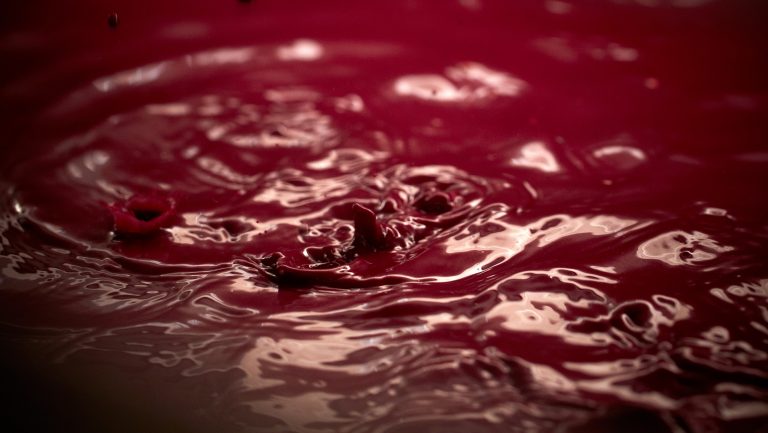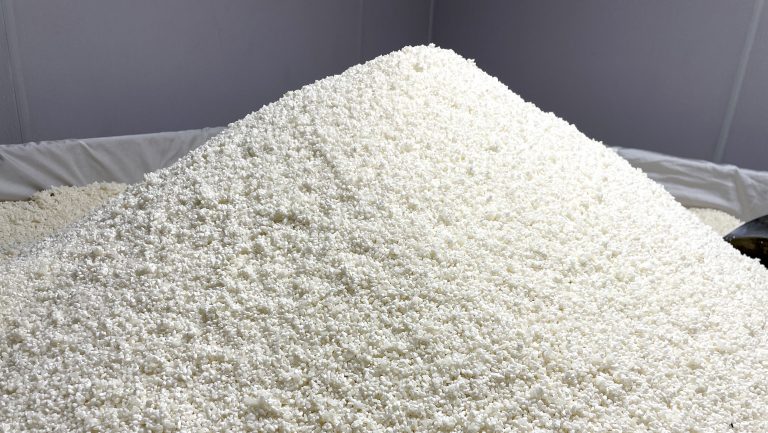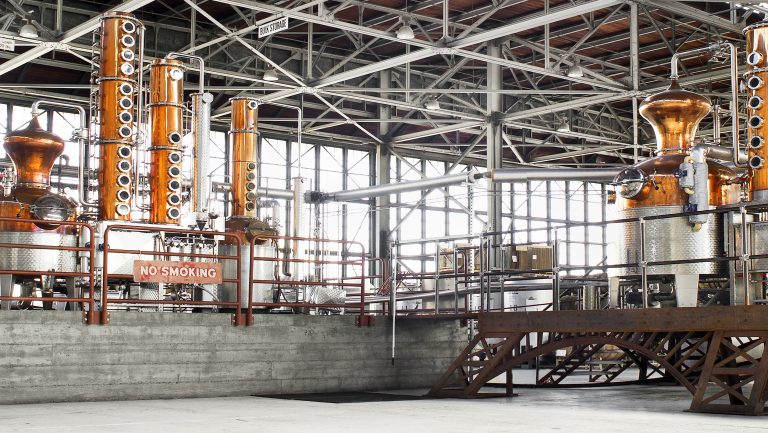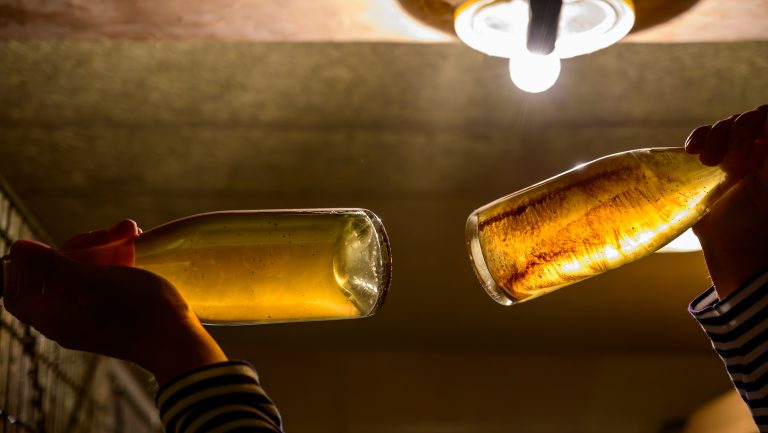When presenting wines, winemakers will often mention their pH as an indication of character, to point out whether a particular cuvée is energetic and fresh or more smooth and ripe. But what does the pH number mean, exactly, and how can it be used to better understand wine?
Acidity’s importance to wine cannot be understated, as it contributes freshness, acts as a preserving agent, and helps, notably, with microbial stability. Potential of hydrogen (pH) is one of the two main scales used to measure the acidity in wine and countless other solutions. While the other scale, total acidity (TA), is counted in grams per liter, pH measures the concentration of hydrogen ions in the solution. Anna Katharine Mansfield, an associate professor of enology at Cornell University, says, “They’re two different measures: concentration of acid (TA), versus acid strength (pH).”
Some acids are stronger than others, meaning that they release more ions into the solution per weight. “In wine, tartaric, malic, and lactic acid are the main acids,” explains Nova Cadamatre, MW, the owner and winemaker at Trestle Thirty One in New York’s Finger Lakes region. (She also makes wine with Constellation at Robert Mondavi Winery in Napa.) “Tartaric is stronger, while malic and lactic are weaker, so if there are more of those, you get a higher pH reading, even though you might have more total acid than in another wine with a lower pH.”

Don’t miss the latest drinks industry news and insights. Sign up for our award-winning newsletters and get insider intel, resources, and trends delivered to your inbox every week.
The pH scale runs from 0 to 14, from very acidic to very basic, or alkaline. Somewhat confusingly, lower pH numbers mean higher amounts of hydrogen ions, and therefore a more acidic wine. In comparison, lemon juice usually has a pH between 2 and 3, while orange juice and wine are generally between 3 and 4, with some wines reaching slightly beyond that, to high 2s or low 4s. For each full point increase in pH, the level of acidity is 10 times more acidic as you go up, so the difference between a pH of 3 and a pH of 4 is very significant. It’s the difference between a super-crisp cool-climate Riesling (around 3) and a jammy, sun-baked Cabernet Sauvignon from Lodi, California (around 4).
One thing is for sure: When someone tells you a wine is like battery acid, it’s really just a figure of speech. Battery acid has a pH of 1, about 100 times more acidic (calculating the difference between pH levels 1 and 3 by multiplying 10×10) than the crispest of white wines.

What pH Can Tell You
Acidity is an essential component of any wine’s profile, and it greatly influences overall perception. “If the pH is higher, the wine will be softer and rounder, and if the pH is lower, it will feel more linear,” says Cadamatre. “Knowing what your acid is like is a huge consideration [for a winemaker]. It influences the rest of your decisions.”
Some winemakers will prefer measuring by TA, while others prefer pH, when trying to work out their approach for vinifying a particular lot. “TA is going to tell you more about perception, while pH is more helpful to evaluate things like microbial stability issues,” says Mansfield. When pH measures above 3.8, a lot of bacteria have an easier time proliferating, meaning that the wine can face more problems involving microbiological stability.
Winemaker David Croix, the owner of Domaine des Croix in Beaune (who previously worked at Camille Giroud in Beaune and Domaine Roulot in Meursault), explains that he typically looks at pH rather than TA. When wines exceed 3.8, he is more careful about certain aspects of winemaking. “It’s like an alarm bell for me,” Croix says. “In reds, I’ll go for shorter press cycles and shorter macerations to avoid extracting too much potassium that would raise the pH even more, and I’ll do shorter barrel-aging to avoid potential bacterial issues.”
Also influencing a wine’s acidity is time. Mansfield points out that “acids can form other complexes over time—notably, interacting with alcohol—and that can make the older wines less acidic.”
Winemaker Matthieu Perrin, whose family owns Château de Beaucastel in Châteauneuf-du-Pape, concurs that these numbers change over time. “We do analysis of older vintages, and we find that original differences in pH between vintages tend to converge and harmonize.”
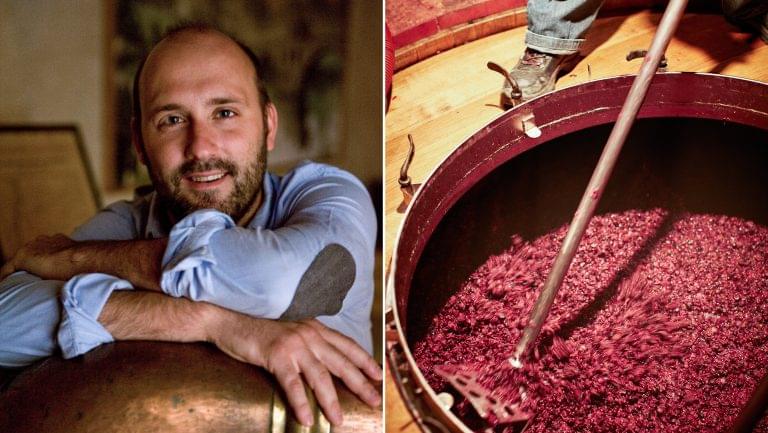
Perception vs. Chemistry
Winemakers like Perrin also point out that pH numbers aren’t an absolute or an overriding factor in defining a wine’s character and its freshness. A wine with a pH of 3.5 has twice the hydrogen ions of a wine at 3.6, but the acidity will hardly seem twice as high from a sensory point of view. Individual physiology also plays a part in perceiving flavors, adds Mansfield. “If your saliva has a higher protein content,” she says, “you could be tasting more acid.”
Aspects like tannins, bitterness, reductive notes, alcohol levels, and others can also change the perception of freshness significantly. Cadamatre points out that higher potassium content in the grapes will make the pH of a wine rise, but that at the same time, higher potassium will influence the perception of minerality in that wine. On a sensory level, this might create a greater impression of freshness, even though the wine is less acidic. “When using whole-bunch fermentation,” says Croix, “the potassium in the stems goes into the wine, which raises pH, and yet there is an impression of freshness that comes with the whole-bunch profile.”
Amongst the brain’s chemical receptors, a number of interactions take place that condition overall perceptions. “When a wine is darker, our brain tells us it’s going to be sweeter,” explains Mansfield. “If there are creamy, buttery notes, it will make us think the wine is less acidic.” While such perceptions might seem more sensory illusion than fact, she insists that “the mental is as legitimate as the chemical, in terms of taste and of the pleasure we derive from the wine. There are so many things going on between sensory aspects and chemistry that it gets very complicated to sort them out.”
Reading pH in Context
Dan Petroski, the winemaker at Larkmead and Massican in Napa Valley, regularly sees wines that exhibit freshness despite pH numbers that say otherwise. At Larkmead, the Cabernet Sauvignons often reach or climb above a pH of 4, yet according to Petroski, they retain balance and freshness. He has lowered or eliminated acid additions over time, after seeing that these additions didn’t seem to influence the overall feel of the wines in a significant way. “You see it in the Northern Rhône, as well, with Syrah wines whose pH can reach over 4.2 yet feel remarkably fresh.”
Petroski says that he runs a “very geeky” tasting group that sometimes uses his lab equipment to test the wines in a blind tasting. “Recently,” he says, “we tasted Larkmead Cabs side by side with Quintarelli and Dal Forno Amarones, and it wasn’t easy to tell them apart. Yet when we ran the pH numbers, the Amarones were around 3.6 and the Larkmead was at 4.0. There can certainly be some crazy numbers with pH. Why? Chalk it up to the mystery of terroir.”
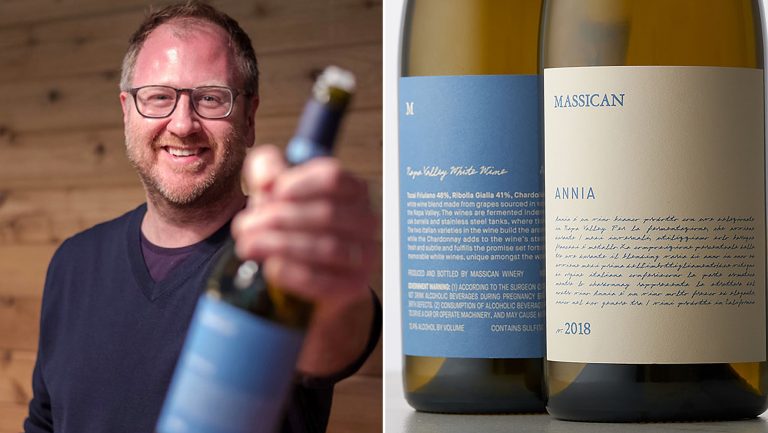
Petroski isn’t the only one to see occasional contradictions between high pH numbers and fresh-tasting wines. “The 2018 vintage was very warm and dry in Burgundy,” says Croix, “and this means some pretty high pHs. Yet I don’t have any feeling of heaviness in the wines.”
Considering the number of variables at play, one would tend to agree with Perrin when he recommends taking numbers such as pH with a grain of salt.
“We’re the fifth generation [of winemakers],” he says, “and we’ve been doing this for a hundred years. My grandfather and my father didn’t have access to all the analytical tools we have today. It was more a question of observing nature, of making personal choices. You can’t always draw equations from those numbers. Otherwise, our job would be mathematics.”

Dispatch
Sign up for our award-winning newsletter
Don’t miss the latest drinks industry news and insights—delivered to your inbox every week.
Rémy Charest is a journalist, writer, and translator based in Quebec City, Canada. He has been writing about wine and food since 1997 for various Canadian and American print and online publications, including Chacun son vin/WineAlign, Wine Enthusiast, Le Devoir, Le Soleil, EnRoute, Palate Press, Punch Drink, and Châtelaine, and has been a regular radio columnist for CBC/Radio-Canada. He has also judged national and international wine competitions, notably the WineAlign National Wine Awards of Canada, the TEXSOM International Wine Awards, and the International Rosé Championships.

